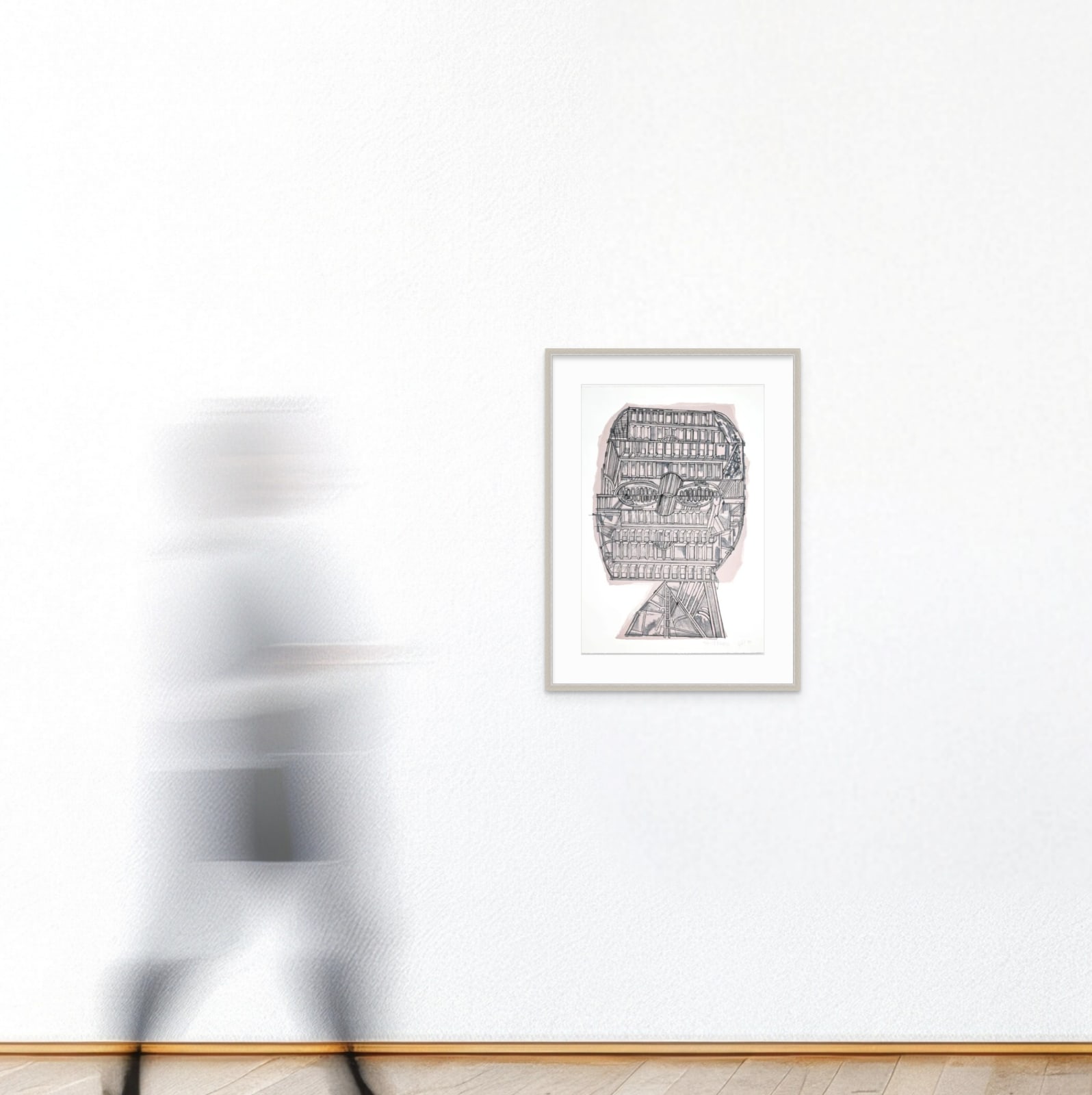Eduardo Paolozzi Scottish, 1924-2005
Sold unframed
Further images
About the Work
Homage to Picasso (Homage à Picasso) is a lithograph created in 1976 by the Scottish-Italian artist Eduardo Paolozzi. This artwork exemplifies the "decoupage" aesthetics that Paolozzi developed as a child by collecting magazine cutouts from Hollywood publications and assembling them into scrapbooks. Throughout his career, Paolozzi challenged the notion that such humble media were too lowbrow for fine art and admired Picasso's similar contrarian attitude toward conventional standards.
In this lithograph, the artist employs a collage aesthetic, characterized by angled "cut" edges and imperfect reconstruction, giving Homage to Picasso its distinctive cubist style. Paolozzi was also influenced by the increasing integration of machinery into urban society, which is reflected in his portrayal of industrial forms throughout his work. The industrial structure depicted in the piece conveys the artist's concerns about contemporary life, much like Picasso did with works such as Guernica.
Paolozzi created multiple versions of his works throughout his career, refining completed pieces to develop new variations. For this print, he experimented with a range of techniques, producing lithographs, serigraphs, etchings, woodcuts, and aquatints. This lithograph was printed at the P. Clement Print Shop in Amsterdam and published in 1976 by Propyläen-Verlag in Berlin.
Collette uses cookies to create a more artful experience.
Join our mailing list
Subscribe to our mailing list to receive emails on upcoming exhibitions, available works, events, and more.










